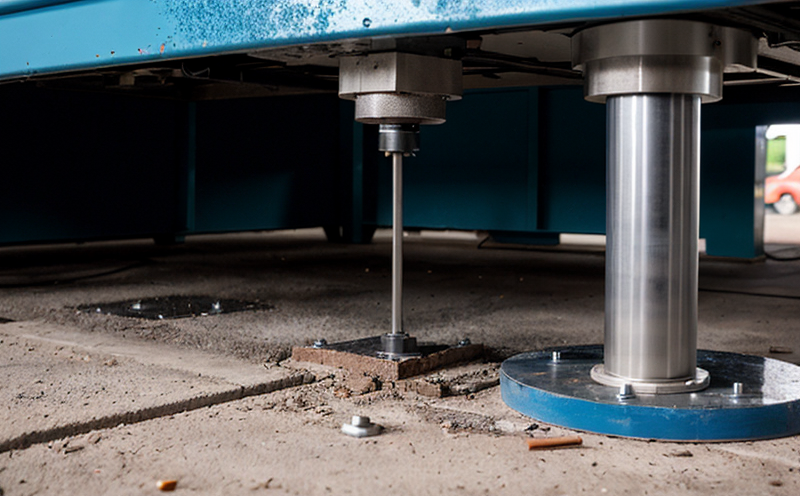ISO 18231 Residual Stress Determination by X-ray Diffraction
The ISO 18231 standard provides a robust framework for determining residual stresses in materials using X-ray diffraction (XRD) techniques. This method is particularly valuable in the Additive Manufacturing & 3D Printing sector, where understanding internal stress states within parts is critical to ensuring part integrity and performance.
Residual stresses are inherent mechanical stresses that remain after a material has been subjected to external forces or thermal treatments during manufacturing processes such as additive manufacturing (AM). These stresses can have significant implications for the final product's quality and reliability. The ISO 18231 standard offers a precise method to quantify these stresses, enabling manufacturers to optimize their processes and improve part performance.
The XRD technique relies on the diffraction of X-rays by crystalline planes within the material. By analyzing the intensity and angle of this diffraction, it is possible to calculate the stress state in different regions of the sample. This non-destructive method allows for in-depth analysis without affecting the integrity of the part.
The process involves several key steps:
- Sample preparation: Ensuring that the sample is representative and free from surface irregularities.
- Data acquisition: Collecting X-ray diffraction data under controlled conditions to minimize external influences.
- Data analysis: Using specialized software to interpret the diffraction patterns, extracting stress values across various regions of interest.
The accuracy and precision of ISO 18231-compliant residual stress determination are crucial for industries relying on AM technologies. This standard ensures that the testing methodology adheres to international best practices, providing consistent results across different laboratories and facilities.
Understanding the residual stress within additive manufactured parts is essential for optimizing process parameters. By identifying areas of high or low stress concentrations, manufacturers can refine their processes to reduce defects and improve product reliability. This knowledge also aids in predicting potential issues with part longevity under operational conditions, enhancing overall quality assurance.
The ISO 18231 standard supports the broader goals of Additive Manufacturing by promoting consistent and reliable testing practices. It ensures that products meet stringent quality standards, thereby fostering trust among stakeholders and improving market acceptance.
Industry Applications
The ISO 18231 residual stress determination method has wide-ranging applications across various sectors of the manufacturing industry, particularly in additive manufacturing (AM). This technique is vital for ensuring that parts produced through AM technologies meet stringent quality and reliability standards.
- Aerospace: Ensuring structural integrity in critical components like airframes and engines.
- Motorsports: Enhancing performance by optimizing stress distribution in lightweight, high-performance parts.
- Medical Devices: Guaranteeing biocompatibility and durability of implants and prosthetics.
- Civil Engineering: Assessing the long-term stability of large-scale structures like bridges and buildings.
In each of these industries, the ability to accurately determine residual stresses is paramount. The ISO 18231 standard provides a reliable method for achieving this, ensuring that parts produced through AM technologies meet the highest quality standards.
Quality and Reliability Assurance
The determination of residual stress using ISO 18231 is integral to maintaining high-quality products in additive manufacturing processes. This standard ensures that the testing methodology adheres to international best practices, providing consistent results across different laboratories and facilities.
By accurately identifying areas with excessive or insufficient stress concentrations, manufacturers can refine their processes to eliminate defects and improve part performance. This not only enhances product reliability but also extends the operational lifespan of parts under various working conditions. The precise nature of ISO 18231-compliant testing allows for early detection of potential issues, enabling timely corrective actions.
The standard's emphasis on replicable methods ensures that all parties involved in the production and quality assurance processes are aligned. This fosters trust among stakeholders and enhances market acceptance by providing a transparent and verifiable process. The reliability assured through ISO 18231 testing is particularly critical for industries where part failure could have severe consequences, such as aerospace or medical devices.
The ongoing advancements in additive manufacturing technologies necessitate robust quality assurance measures. ISO 18231 provides the necessary framework to support these innovations, ensuring that products meet stringent quality and reliability standards across various sectors.
Environmental and Sustainability Contributions
- Eco-friendly Processes: The accurate determination of residual stress helps in optimizing manufacturing processes, reducing material waste and energy consumption. This minimizes the environmental footprint associated with additive manufacturing.
- Sustainable Materials: By ensuring that parts are free from excessive stresses, ISO 18231 supports the use of sustainable materials, promoting their longevity and recyclability.
- Energy Efficiency: The precise stress determination allows for efficient process parameters, reducing energy consumption during manufacturing. This contributes to overall sustainability efforts in the industry.
Through these contributions, ISO 18231 plays a crucial role in promoting sustainable practices within the additive manufacturing sector, aligning with broader global initiatives aimed at environmental stewardship and resource conservation.





